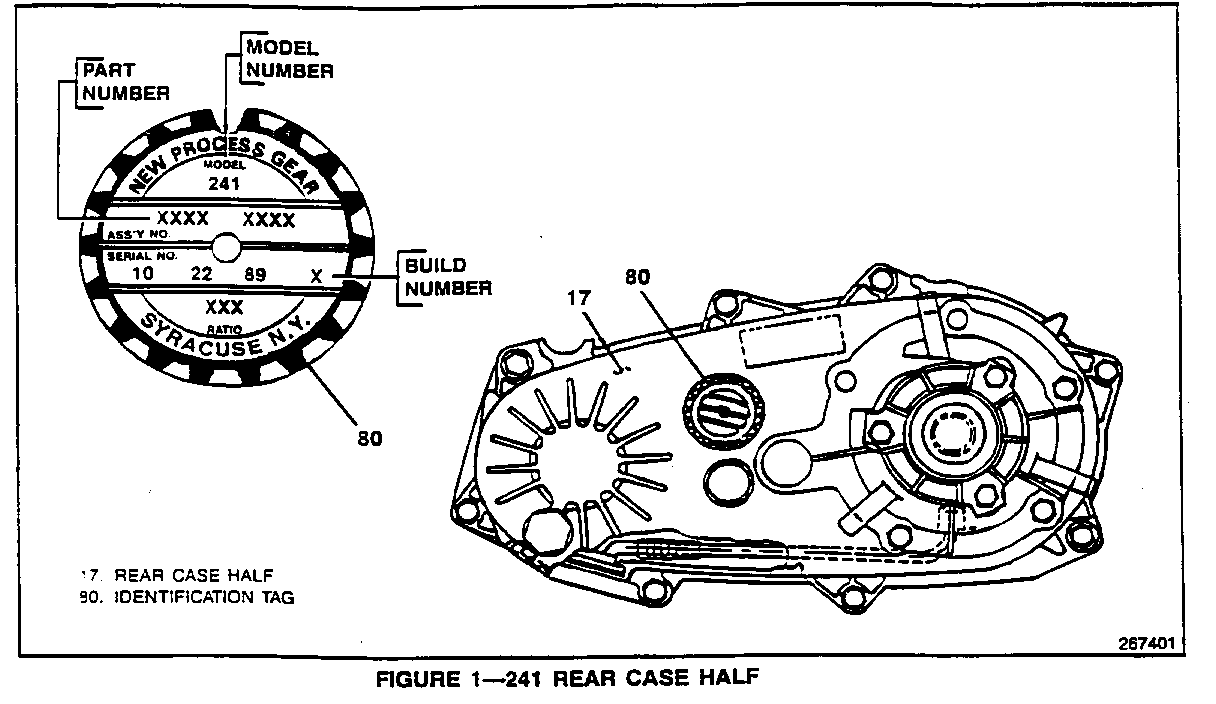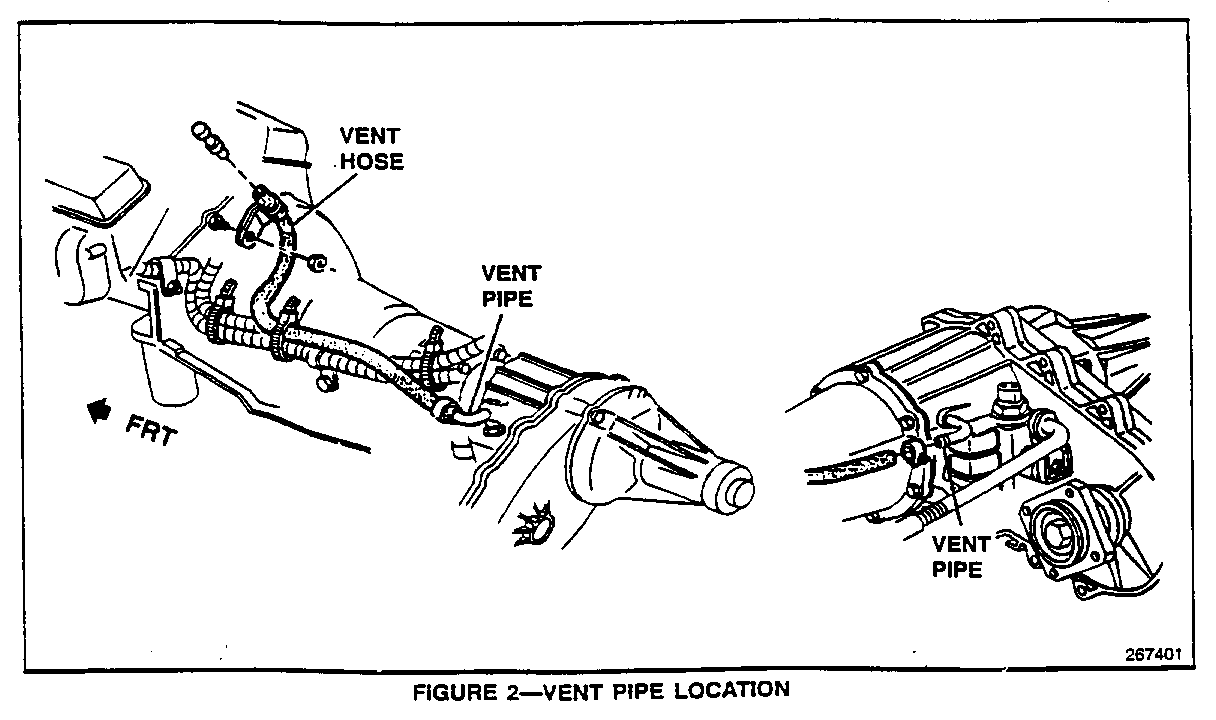FLUID LEAK TRANSFER CASE VENT (INSTALL REVISED VENT PIPE)

SUBJECT: FLUID LEAK FROM TRANSFER CASE VENT
MODEL and YEAR: 1988-92 K TRUCK WITH NEW PROCESS 241 TRANSFER CASE
Some owners of 1988-91 K Trucks equipped with a New Process 241 transfer case (Figure 1) may comment that their vehicle experiences a fluid leak from the transfer case vent. This leak usually occurs during normal highway driving in 2H.
This condition may be caused by fluid spray from the planetary carrier entering the vent pipe (Figure 2) and being forced out the vent hose.
To correct this condition, it is necessary to install a revised vent pipe (P/N 15958721). The opening of the revised vent pipe has been moved from the end of the pipe to the side of the pipe. This prevents fluid from entering the vent pipe and leaking from the vent hose.
SERVICE PROCEDURE:
1. Remove the transfer case from the vehicle. Refer to the appropriate C/K Service Manual, Section 7D, "TRANSFER CASE REPLACEMENT" for the complete transfer case removal procedures.
2. Remove the transfer case vent pipe (Figure 2).
3. Install a new vent pipe (P/N 15958721). Use RTV sealant or equivalent on the mating area between the vent pipe and case.
IMPORTANT: The new vent pipe must face to the front of the vehicle. If it is not installed facing to the front, the transfer case may continue to leak.
4. Install the transfer case into the vehicle. Refer to the appropriate C/K Service Manual, Section 7D, "TRANSFER CASE REPLACEMENT" for complete transfer case installation procedures.
SERVICE PARTS INFORMATION
Part Number Description Qty/Veh ----------- ----------- ------ 15958721 Vent Pipe 1
Parts are currently available from GMSPO.
WARRANTY INFORMATION
For vehicles repaired under warranty use: Labor Operation: T7501 Labor Time: 1.0 hrs.
Note: Labor Operation is coded to the base vehicle coverage in the warranty system.


General Motors bulletins are intended for use by professional technicians, not a "do-it-yourselfer". They are written to inform those technicians of conditions that may occur on some vehicles, or to provide information that could assist in the proper service of a vehicle. Properly trained technicians have the equipment, tools, safety instructions and know-how to do a job properly and safely. If a condition is described, do not assume that the bulletin applies to your vehicle, or that your vehicle will have that condition. See a General Motors dealer servicing your brand of General Motors vehicle for information on whether your vehicle may benefit from the information.
